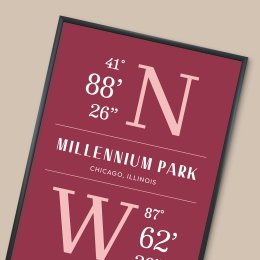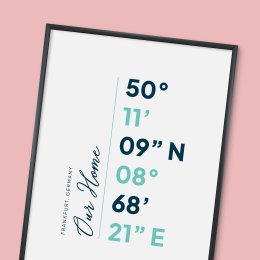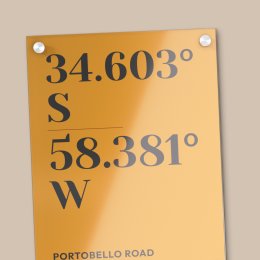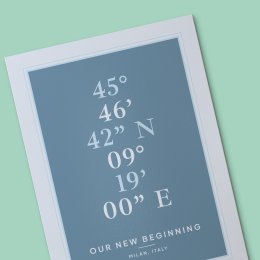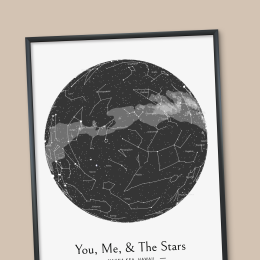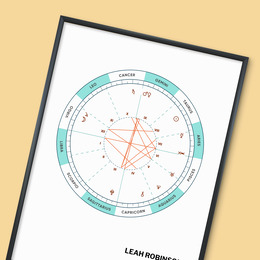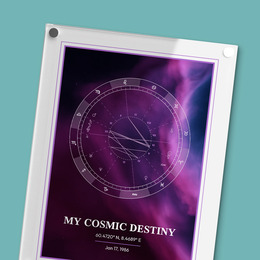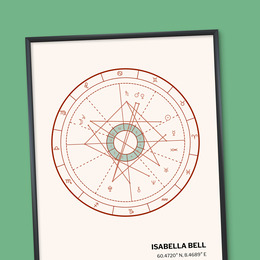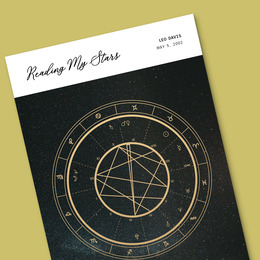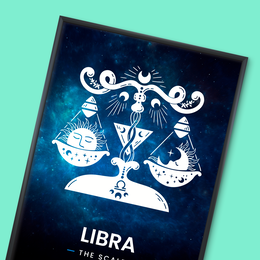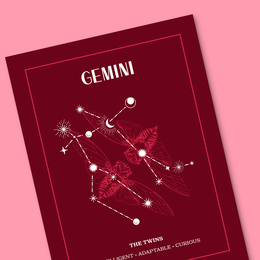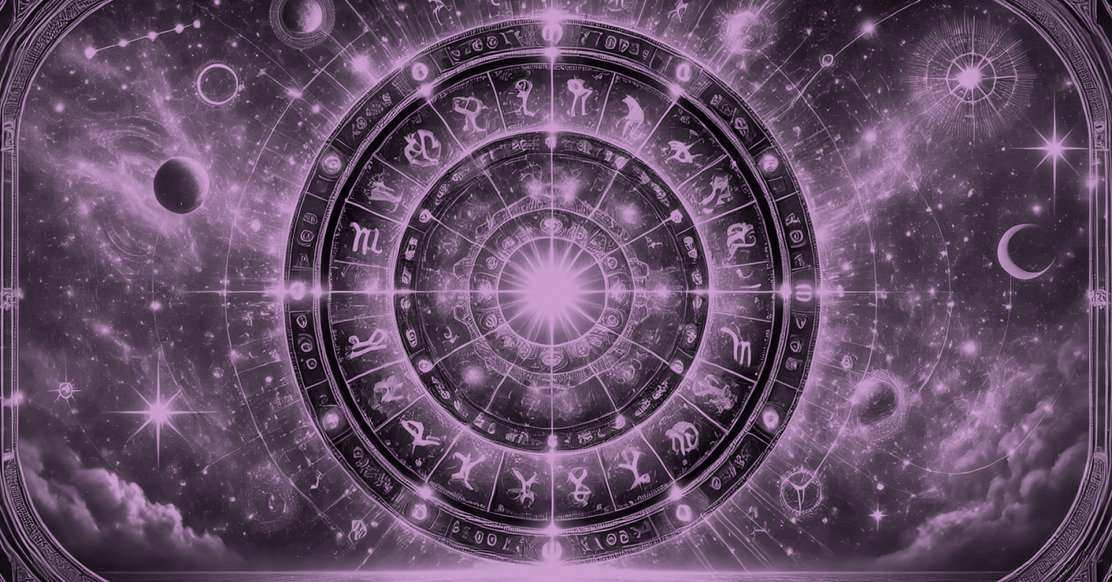
Calculating & Interpreting Your Astrological Birth Chart
An astrological birth chart, also known as a natal chart, is a powerful tool for understanding yourself and your life’s path.
It represents the position of celestial bodies at the exact moment and location of your birth, offering insights into your personality, relationships, career, and more.
This is the reason thousands of people around the country— and the world— create natal chart prints. These serve as reminders of a higher force looking over our lives, but once you create your own birth chart poster, how do you begin to understand it?
In this guide, you’ll learn how to calculate your birth chart and interpret its key components to uncover the layers of your cosmic blueprint.
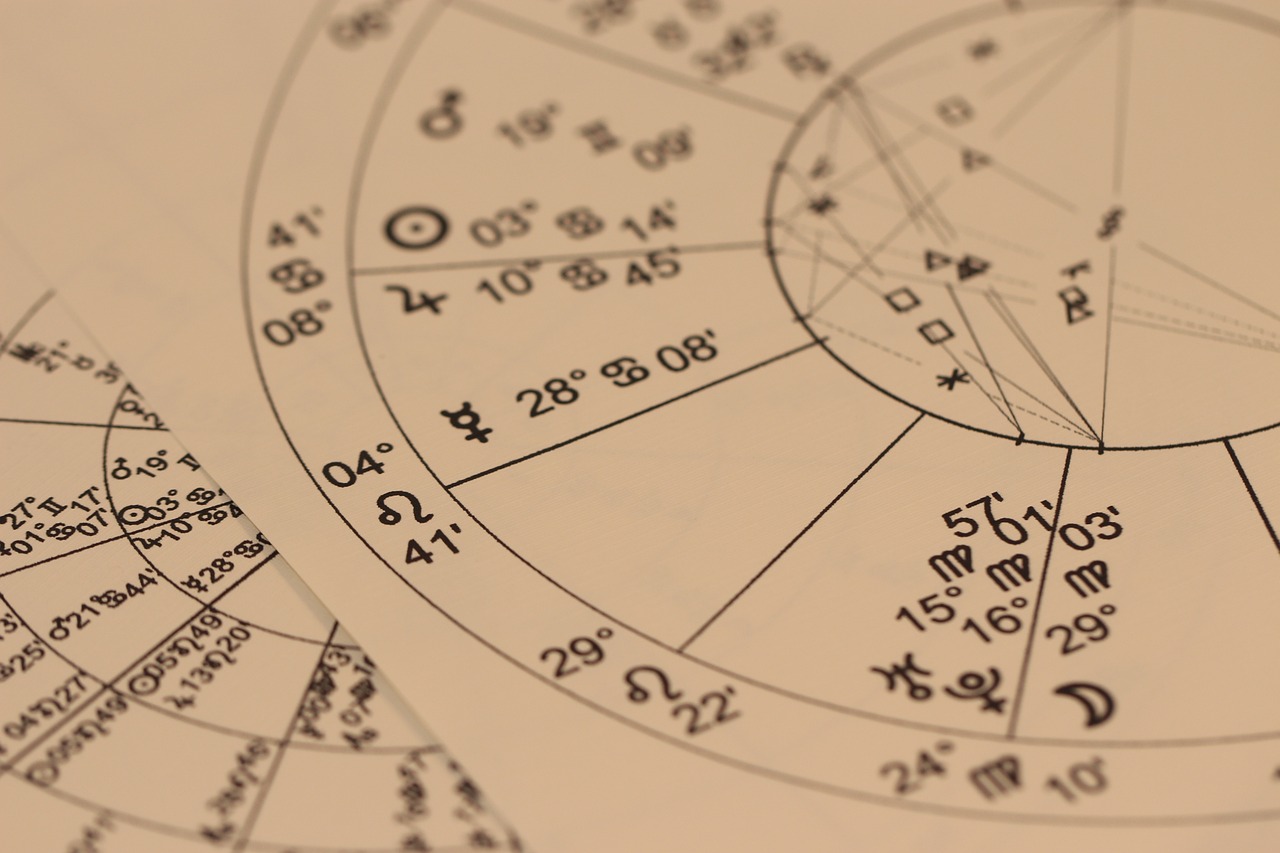
What is an Astrological Birth Chart?
A birth chart is essentially a snapshot of the sky at the moment you were born.
It captures the exact positions of the Sun, Moon, planets, and other celestial bodies at a specific time and place, offering a comprehensive map of your unique cosmic makeup.
This map provides deep insights into various aspects of your life, including your inner emotions, desires, external influences, and interpersonal relationships.
Each part of the chart carries significant meaning and works together to create a holistic picture of your personality and potential.
For example, the planets signify specific energies and motivations, while the zodiac signs represent how these energies are expressed.
The astrological houses, on the other hand, show where these energies manifest in your life—such as in your career, relationships, or home environment.
Lastly, the aspects, or geometric angles between planets, reveal how different parts of your chart interact and influence one another.
Key elements of a birth chart include:
- Planets: Represent fundamental energies and drives, such as Mercury for communication and Venus for love and harmony.
- Houses: Indicate the areas of life where planetary energies are most prominent, such as career, relationships, and personal growth.
- Signs: Add unique characteristics and expressions to planetary and house energies, shaping how they manifest.
- Aspects: Show the dynamic relationships between planets, highlighting areas of harmony or challenge in your life.

How to Calculate Your Birth Chart
Calculating a birth chart can seem complex, but it’s a manageable and rewarding process if approached step by step.
At its core, a birth chart is created by plotting the exact positions of celestial bodies based on your birth date, time, and location.
While modern technology has simplified this process with online calculators and astrology software, it is possible to calculate a birth chart manually for those interested in a deeper understanding of the mechanics.
Essential Information Needed
To calculate your birth chart, you’ll need three key details:
- Birth Date: The exact day, month, and year you were born.
- Birth Time: The precise time of day (if unknown, an astrologer can use a rectification process, but accuracy matters).
- Birth Location: The city or town where you were born.
Understanding the Basics
Your chart will appear as a circular zodiac wheel with symbols representing planets, signs, and houses.
The Ascendant (Rising Sign) marks the starting point of the chart and sets the framework for house placements. This is also known as the chart’s “ruler.”
Calculating Your Birth Chart Manually
While calculating a birth chart manually is possible, it requires access to certain tools and knowledge of astrological principles. Here’s what you would need:
- Ephemeris: A table that provides the positions of planets for specific dates.
- Time Zone Conversions: Understanding how to adjust your birth time to Universal Time (UT).
- House System Chart: A guide to dividing the chart into 12 astrological houses, often based on the Placidus, Equal, or Whole Sign system.
- Mathematical Calculations: Determining the degrees of the zodiac and angles of celestial bodies based on your birth location.
This manual process involves plotting planets onto a circular zodiac wheel and requires significant attention to detail.
While it can be a rewarding endeavor, it’s time-intensive and best suited for those with a strong interest in astrology.
Can I Do It Myself?
Yes, you can absolutely calculate your own birth chart using online tools or software. Many free websites and apps simplify this process and provide detailed chart interpretations.
If you prefer to understand the calculation process deeply, you can start manually with an ephemeris and astrology guides. However, beginners are often advised to use digital tools to avoid errors and focus on interpretation.
Do I Need an Astrologer or Software?
While it’s not mandatory to consult an astrologer or use software, both options offer significant advantages:
- Astrologers: Professional astrologers provide personalized insights and can interpret subtle details of your chart that automated tools might overlook. They’re particularly helpful for beginners and those seeking in-depth guidance.
- Software: Online programs, both free and paid, offer highly accurate calculations and customizable features for advanced users. For a more user-friendly option many astrology apps are available.
Ultimately, whether you calculate your chart manually, use software, or consult an astrologer, the goal is to uncover the unique insights your birth chart offers into your life’s path and potential.

Key Elements of a Birth Chart
Your birth chart is a complex and layered map of cosmic energies that shapes your unique personality and life experiences.
At its core, it combines the positions of the planets, the zodiac signs, the 12 astrological houses, and their interactions. By exploring each of these elements in detail, you can uncover deep insights into your character, relationships, career, and spiritual growth.
Understanding these components is key to decoding the rich tapestry of your chart.
Sun, Moon, and Rising: The Big Three
The Sun, Moon, and Rising signs form the foundation of your birth chart are often referred to as "The Big Three." These elements shape your core personality, emotional world, and outward expression.
- Sun Sign: Often considered the essence of your being, the Sun sign reflects your core identity, ego, and vitality. It represents your life’s purpose and what drives you at the deepest level. For example, an Aries Sun may indicate a bold and adventurous nature, while a Taurus Sun reflects stability and a love for comfort.
- Moon Sign: The Moon governs your inner emotional world, instincts, and subconscious mind. It influences how you process emotions, your habits, and what makes you feel secure. For instance, a Moon in Cancer suggests nurturing tendencies and strong family connections, while a Moon in Aquarius emphasizes emotional independence and innovation.
- Rising Sign (Ascendant): Your Rising sign is the lens through which the world perceives you. It determines your outward demeanor, first impressions, and how you approach new situations. A Capricorn Rising, for example, might exude a professional, disciplined aura, whereas a Gemini Rising radiates curiosity and adaptability.
Planets and Their Roles
Each planet in your birth chart governs specific areas of your personality and life, acting as symbols of energy and influence:
- Personal Planets: These include the Sun, Moon, Mercury, Venus, and Mars. They shape your day-to-day experiences and individual traits.
- Mercury: Governs communication, thought processes, and decision-making. A Mercury in Gemini, for instance, enhances wit and adaptability in communication, while Mercury in Capricorn adds structure and practicality.
- Venus: Represents love, beauty, and harmony. Its placement reveals your approach to relationships and aesthetics. Venus in Libra emphasizes balance and diplomacy, while Venus in Scorpio signals intensity and passion.
- Mars: Symbolizes action, drive, and ambition. Mars in Aries is direct and bold, while Mars in Virgo is meticulous and strategic.
- Outer Planets: Jupiter, Saturn, Uranus, Neptune, and Pluto influence broader themes and generational patterns:
- Jupiter: Reflects growth, optimism, and opportunities. Its placement shows where you find abundance and expansion.
- Saturn: Represents discipline, responsibility, and challenges that lead to growth.
- Uranus: Governs innovation, rebellion, and sudden changes.
- Neptune: Symbolizes dreams, spirituality, and illusions.
- Pluto: Reflects transformation, power, and rebirth.
The 12 Astrological Houses
The houses divide your birth chart into 12 sections, each representing specific life domains:
- 1st House (Self): Reflects identity, appearance, and first impressions.
- 2nd House (Values): Focuses on finances, possessions, and self-worth.
- 3rd House (Communication): Covers intellect, learning, and interactions with siblings and neighbors.
- 4th House (Home): Represents family, roots, and emotional foundations.
- 5th House (Creativity): Highlights romance, hobbies, and self-expression.
- 6th House (Health): Relates to daily routines, work habits, and well-being.
- 7th House (Partnerships): Governs relationships, contracts, and collaborations.
- 8th House (Transformation): Deals with shared resources, intimacy, and personal growth.
- 9th House (Philosophy): Focuses on higher learning, travel, and belief systems.
- 10th House (Career): Represents public image, career, and ambitions.
- 11th House (Community): Governs friendships, social networks, and future goals.
- 12th House (Spirituality): Covers subconscious patterns, dreams, and spiritual growth.
Aspects Between Planets
Aspects reveal how planets interact with one another, creating harmony or tension within your chart. These angles influence your experiences and personality traits:
- Conjunction: When two planets align closely, their energies blend, amplifying their influence. For example, a Sun-Mercury conjunction enhances intellectual vitality.
- Opposition: Planets positioned 180 degrees apart create a push-pull dynamic, encouraging balance and compromise.
- Square: A 90-degree angle signals tension and challenges that spur growth and resilience.
- Trine: Planets 120 degrees apart create ease and flow, often signifying natural talents or favorable opportunities.
- Sextile: A 60-degree angle suggests potential opportunities that require effort to realize.

Interpreting Your Birth Chart
Interpreting your birth chart can be an illuminating experience that reveals hidden layers of your personality, strengths, and challenges.
Each placement and aspect within the chart tells a story, offering insights into how various energies influence your life.
By following a structured approach, you can start to unravel the intricate connections within your chart and discover a deeper understanding of yourself and your purpose.
Step-by-Step Interpretation
- Start with the Big Three: Focus on your Sun, Moon, and Rising signs to understand your core personality and emotional nature.
- Analyze Planets in Signs and Houses: Look at how planetary placements influence specific areas of life.
- Study Aspects: Consider how planets interact and whether they support or challenge one another.
- Identify Patterns: Note recurring themes, such as dominant elements (fire, earth, air, water) or modalities (cardinal, fixed, mutable).
Practical Tips for Beginners
- Keep it simple! Focus on major placements before diving into minor details like asteroids.
- Use a notebook to jot down observations and build your understanding over time.

Common Misconceptions About Birth Charts
Astrology is a deeply nuanced and complex system, but it’s often misunderstood due to oversimplified explanations and myths.
Many people reduce astrology to just their Sun sign, but a full birth chart offers much more insight into the intricacies of an individual’s personality and life path.
Addressing these misconceptions can help demystify astrology and encourage a more comprehensive understanding of its practice.
|
Myth |
Reality |
|---|---|
|
Sun sign astrology tells the whole story. |
Your Sun sign is just one piece; the Moon, Rising, and planetary aspects provide a fuller picture. |
|
Astrology is deterministic. |
Astrology reveals potentials and tendencies, but free will plays a significant role. |
|
Negative placements mean bad luck. |
Challenging aspects and placements often signal opportunities for growth and transformation. |
Using Your Birth Chart for Personal Growth
Your birth chart is more than just a collection of symbols and placements—it’s a guide to self-discovery and personal development.
By examining the interactions of planets, houses, and aspects, you can uncover hidden talents, recognize life patterns, and navigate challenges with clarity.
Using your chart for growth involves reflection and applying astrological insights to everyday decisions and long-term goals.
- Self-Awareness: Learn your strengths, weaknesses, and unique traits.
- Life Navigation: Use transits (current planetary movements) to align with favorable energies or prepare for challenges.
- Relationships: Understand compatibility and dynamics with others through synastry (comparing charts).
- Career and Goals: Identify vocational strengths and areas for development.
Reading Your Birth Chart: Final Thoughts
Your astrological birth chart is a treasure map to self-discovery.
By learning to calculate and interpret its elements, you can gain profound insights into your personality, life path, and relationships.
Whether you’re a beginner or seasoned astrology enthusiast, exploring your chart can be a transformative journey toward understanding yourself and the cosmos.




